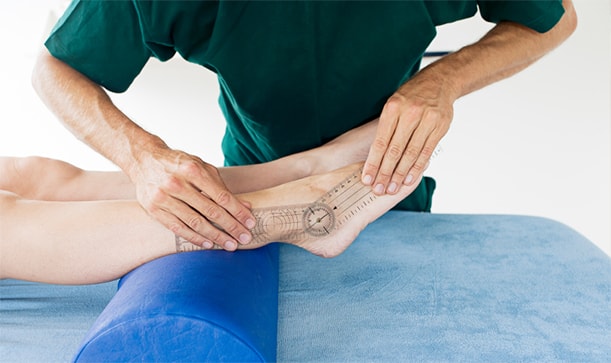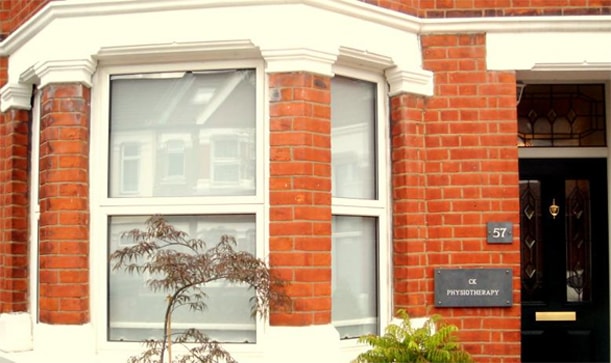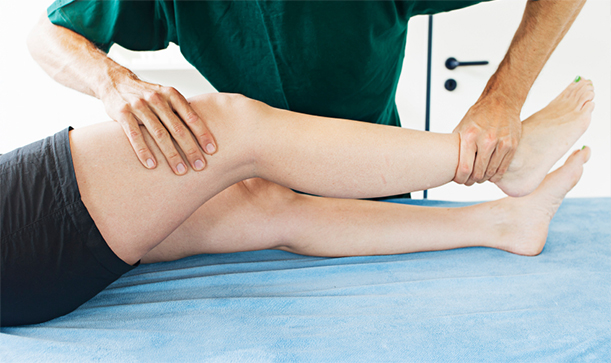CK Physiotherapy
AREAS COVERED
W7, W5, W13, Ealing, West London
57 Elthorne Avenue
Hanwell, W7 2JY
T: 020 8566 4113
M: 079 572 46185
E: info@ckphysio.co.uk
Location / Parking
We are situated in Hanwell, between Boston Manor Road and Northfields Avenue, south of the Uxbridge Road.57 Elthorne Avenue
Hanwell, W7 2JY
There are parking restrictions Mon - Fri 9-10am and 2-3pm. If you need a permit during this time please inform your therapist when you arrive. There are no parking restrictions at other times.
Opening Times
Please phone the number above during working hours to make an appointment. Our reception service will be happy to book your session.
London Underground / Bus Services
London Underground
10 min. walk from Boston Manor Tube Station.
15 min. walk from Northfields Tube Station.
Bus Service
E8, E3, E2, 207, 607, 83
Request Call Back
Our Blog
How to Treat Sciatica Using Electrotherapy Treatment
By: BryanKelly (Psst, View author in Google Plus) Date: Sep 22nd, 2020“5% of the population get sciatica every year.”
Five percent may not sound a great deal but with over 66 million in the UK you start to get an idea of how much of problem sciatica can actually be. Many of us have heard the term sciatica and know that it causes great pain. Yet how many of us know the actual cause, affect and symptoms of this nerve pain. To get an understanding we first have to look at the basic anatomy of the sciatic nerve itself and its purpose.
Without getting too technical, the Sciatic nerve is one of the longest and widest nerves in the body. Arising from the L4-S2 spinal segments, the sciatic nerve then passes through the pelvis, across the buttock area, and down each leg.

Why is the sciatic nerve so important? Well, the sciatic nerve supplies both motor functions and sensory information to the regions of lower back and limbs. This basically means it allows the muscle to synchronously move and feel. Yet, with such vast coverage of the lower body and the multifunctioning purpose of the sciatic nerve, comes greater presence and opportunity for injury or damage.
Sciatica is the term that is used to describe the pain caused by the irritation and/or inflammation of the sciatic nerve. Sciatica can occur anywhere along the sciatic nerve path, but the pain usually presents itself within the lower back, hip or buttock area but can also be felt as far down as the heel or toes. Flares can initially last anywhere between 2 – 6 weeks but for longer durations, advice from physiotherapists should be sought.
So now we know what sciatica is, let’s take a look at some of the symptoms of sciatica.
What are Sciatica symptoms?
Sciatica can arise with some of the following symptoms:
1. Pain
2. Sensation
3. Weakness
Pain
This is usually one of the first and most obvious symptoms of sciatica and can be described as having an underlying burning sensation or feeling sharp shooting pains or even a dull ache. This pain can be persistent or recurrent.
Sensation
The sensation of a tingling or numbness can accompany the pain or be a standalone symptom.
Weakness
A person may feel weakness to the muscles or limb(s) can be from fatigue and/or sensory overload of the irritating section of the sciatic nerve.
Posture and movement
Sometimes sciatica can be aggravated by walking or bending, especially if done incorrectly and without support. The pain can be debilitating at times and rest may be needed.
What Causes Sciatica?
Some of the above symptoms may have been experienced by us all, at one time or another but what are the causes that lead to this?
Sciatica is a symptom of an underlying problem and not the diagnosis itself. The causes of sciatica symptoms can result from the following:
5. Pregnancy
6. Trauma
Herniated disc
A herniated lumbar disc can cause sciatica through direct nerve compression, or chemical inflammation caused by the diffusion of an acidic chemical leaking from a disc.
Degenerative tissue
This is the degeneration of the surrounding lumber spine tissue can compress or irritate the sciatic nerve.
Narrowing of spine
Known as spinal stenosis, the narrowing of the spinal canal can cause irritation and is commonly associated with those over 60.
Stress fractures
Spondylolisthesis refers to when a vertebral body slips forward onto another. This can cause bilateral sciatica (on both sides) and is more common in younger adults.
Pregnancy
With increased hormone levels and stress upon the body, many women can experience discomfort within the lumbar region and legs. Mostly this is associated with Pelvic Girdle Pain (PGC) but in some cases can present as sciatica.
Trauma
Any severe trauma experienced such as vehicle accidents, sporting accidents or falls can result in Sciatica symptoms.
How to Ease the Pain Caused By Sciatica
“Up to 40% of us will experience Sciatica at least once in our lifetime”
That is quite an alarming percentage of the population that will experience the pain and discomfort caused by sciatica so what can we do to ease it.
Of course, prevention is better than cure, so suitable advice would be to have good posture when sitting or standing, receive regular exercise and to maintain a healthy diet. But when you are experiencing a flare of Sciatica how do you cope with or ease your discomfort?
Even though rest may be needed at times, it is actually recommended to try and remain active and alternate between walking, sitting, standing or laying down. Also, gentle stretching is a good way to manage the symptoms of sciatica and help reduce inflammation or irritation. You may also want to use a variety of heat or ice packs and mild inflammatory medicines.
Here are some exercises you could try to ease the pain caused by sciatica:
6. Standing hamstring to stretch
Knee to chest
Carefully lay flat on the floor bringing your feet towards your bottom, so that your legs are bent and soles of feet are on the floor. Then slowly bring your knees towards your chest, wrapping your arms around them to hug in closer to your chest. Hold them as close to your chest as possible and relax into the stretch.
Knee to shoulder
Lay flat on your back, with both legs extended and arms, positioned wide on the floor for support. Gently bend one leg and bring it towards you as if doing a knee to chest stretch and with the opposite hand, reach across and gradually push or pull the knee towards the opposite shoulder. Hold this stretch to where it is comfortable, this helps stretch the piriformis muscle. Repeat on the other side.
Sitting spinal stretch
Sit upright in a sturdy chair with your feet shoulder-width apart and knees bent at a 90-degree angle and weight distributed evenly. Raise both arms towards the ceiling and stretch up as if you are trying to touch it and hold. Repeat this stretch a few times, trying to reach further with each go.
Sitting hip stretch
Sit upright in a sturdy chair with your feet shoulder-width apart and knees bent at a 90-degree angle. Raise one leg and place the ankle on top of the opposite knee, carefully lean your torso forward to feel the stretch in the hip area and hold. Repeat on the other side.
Sitting spinal twist
Softly sit on the floor with your back straight and legs extended. Bend one knee and place that foot on the floor on the outside of the opposite knee. Keeping that position, gradually begin to turn your torso towards the bent knee and place the opposite elbow on the outside of the bent knee to hold a deeper stretch. You can place your other arm on the floor for support. Repeat on the other side.
Standing hamstring stretch
For this, you will need a small ledge or stool. Stand up straight with feet together. Take one leg out in front of you and rest your heel on the ledge, making sure to keep your leg straight but knee soft. Be sure your back is straight and that your supporting leg is stable, bend from the waist towards the extended leg until you feel the stretch in the back of the leg and hold. Repeat on the other side.
What Exercises To Avoid If You Have Sciatica
As with any exercise please consult a doctor or physiotherapist first and when carrying out any stretches be sure to stop immediately if pain worsens. Only hold the stretches for the length of time that is comfortable for you and all exercises can be adapted to be performed in a chair or on the floor only.
Try to avoid exercises that may involve:
1. Bending over
3. Swinging
Bending over
Any exercise that encourages you to stretch whilst bending over will be beneficial if done correctly. Yet if a poor form is adopted i.e. rounding of the back to pick up weights or touch the floor. Then extra strain will be placed in the back area and stress the sciatic nerve or increased risk of a herniated disk.
Lifting both legs
An exercise that requires the manoeuvre of lifting both legs will encourage you to engage your core. This is great for strengthening your abdominal muscles and lower back but can also aggravate the sciatic nerve and worsen sciatica symptoms.
Swinging
Movements that involve you swinging your legs will require a fast reaction from your hamstring and may cause irritation to the sciatic nerve. These exercises may appear in some Yoga and Pilates routines.
Treatments Recommended for Sciatica
Treatment advice ranges from the mild option of ice and heat packs teamed with rest, to the severe prospect of surgery. But the happy medium that is usually recommended and sought is physiotherapy.
Most physiotherapy involves some physical movement or activity, but for sciatica, a combination of physical exercise and electrotherapy is suggested yielding significant results. Though we have discussed the physical methods of pain management, what is electrotherapy treatment and how does it work?
Electrotherapy is not as scary as it initially sounds and works on the principle of sending electrical currents through the skin to prevent pain signals from reaching the brain whilst helping to repair soft tissues.
Electrotherapy treatment is provided within three areas:
• Ultrasound
• Pulsed short wave therapy
• TENS
Electrotherapy for sciatica provides a non-invasive treatment that can help to interrupt or fully block the nerve signals that create sciatic pain. There are many benefits of electrotherapy that can be explored, but a quick summary of them are:
• Reduces intensity and number of muscle spasms
• Helps release pain-blocking endorphins
• Reduce healing time
• Improves circulation
• Provides deep heat to muscles
The beauty of this therapy is that it has minimal side effects when considering it. As you can imagine, electrotherapy is not just for treating sciatica and has a whole range of benefits for painful ailments that need a long term treatment plan in place. It is an effective way to treat chronic and acute pain without the use of more invasive treatments or opioid medicines.
Consult with CK Physiotherapy for Sciatica Treatment
To find a trusted physiotherapist in London, using electrotherapy for sciatica contact CK Physio. At our Ealing practice, our physiotherapists have years of experience and are able to give you exact information through a detailed consultation. We then can assess and advise you on the best course of electrotherapy treatment to be provided for your personal circumstance at a reasonable cost.





